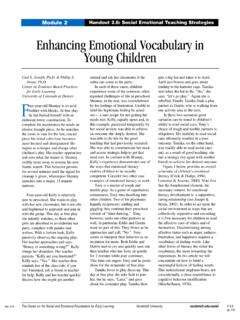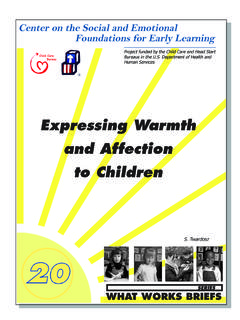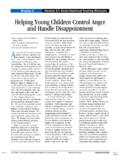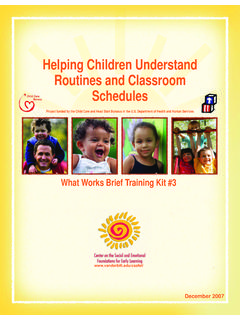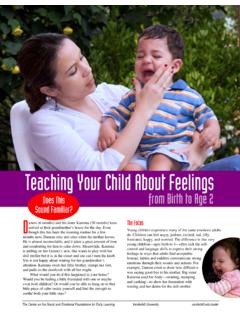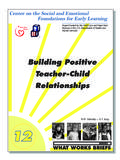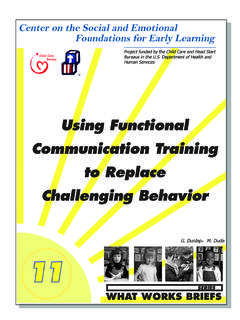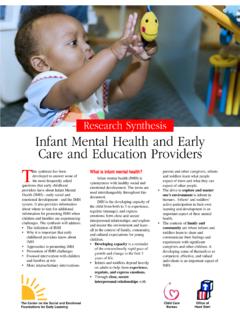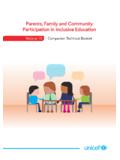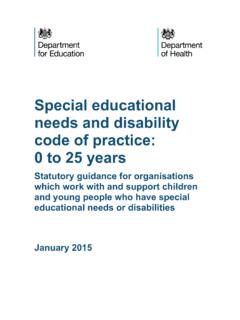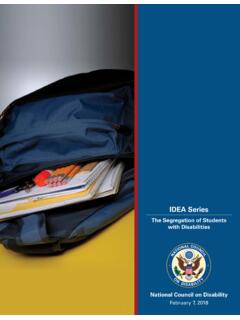Transcription of Strategies for Increasing Peer Social Interactions ...
1 Center on the Social and EmotionalFoundations for Early LearningStrategies for IncreasingPeer Social Interactions :Prompting and AcknowledgmentProject funded by the Child Care and Head StartBureaus in the Department of Health andHuman ServicesWHAT WORKS BRIEFSSERIEST. Bovey P. StrainFor many children , interacting with their peers is difficult. A child may be shy, have a language delay, or have developmental or Social disabilities that make interacting with other children difficult. For example, Sam, a child at the Sand CreekPreschool, has difficulty initiating and maintaining Social Interactions with his friends.
2 When Sam arrives at the classroom,Ms. Kerry greets him and helps him hang up his jacket and say goodbye to his mom. Ms. Kerry then gets ready to direct Sam toTable Time, the first activity of the day. However, as she does so, she also directs his attention to the table where Lisa andDominick are already playing and says, Look, Sam. Lisa and Dominick are playing with Mr. Potato Heads. When you getover there, ask Lisa if you can have one. Ms. Kerry knows that Sam likes to play with Mr. Potato Head, and she sends him onhis way.
3 She then follows behind him, waiting to see whether Sam will indeed ask Lisa for one. Sam walks up to the table, looksat the Mr. Potato Head, looks at Lisa, looks at Ms. Kerry, and then looks back at Lisa and asks, Can I have one? Lisa givesSam a Mr. Potato Head, and Ms. Kerry tells Sam what a great job he did asking Lisa. She gives him a pat on the back, thengoes back to meet other children arriving for the that day during Center Time, Ms. Kerry joins Sam who is playing at the sand table, in proximity to other children but notinteracting with them.
4 Ms. Kerry asks Sam if he would like a shovel, which he takes. After watching Sam play for a few sec-onds, Ms. Kerry asks him if she can use the shovel, which he gives her. They continue to play a little longer, and Ms. Kerrygives the shovel back to Sam. Then, moments later, she says, Sam, can you pass the shovel to Kristi? while she points toKristi on the other side of the sand table. After the three successful Interactions with Ms. Kerry, Sam is confident and hands theshovel to Kristi. Ms. Kerry and Kristi both thank Sam for sharing the about these environmental cues and Social skillsinstructions, see What Works Brief #6: Using EnvironmentalStrategies to Promote Positive Social Interactions and WhatWorks Brief #8: Promoting Positive Peer Social Interactions .
5 Once children learn positive Social behaviors and are able touse them consistently, adults can gradually decrease the numberof prompts that they give Is Prompting and Acknowledgment?Throughout the day, children engage in all kinds of activitiesand Interactions . Some of these behaviors are likely positivebehaviors that we would like the children to do more , the behaviors are not positive, and we would liketo see them decrease. Positive Social behaviors includeappropriate Interactions , sharing, and helping. Positive socialbehaviors can be verbal like saying Hi, asking a friend for atoy, or giving a friend a play suggestion.
6 Positive socialbehaviors can also be nonverbal like giving a high five or ahug, handing a toy to another child, or helping a friend put on way that adults can increase the likelihood of positivesocial behaviors occurring is through the use of prompting andacknowledgment. Adults can use a variety of promptingstrategies to encourage children to interact with each other andto give children ideas on how to interact with each children with prompts or cues to engage in socialbehaviors has been shown over time to increase their socialbehaviors with their peers.
7 These Strategies are best used inaddition to general cues that are already found in theenvironment and with direct Social skills instructions. (To learnStrategies for Increasing Peer SocialInteractions: Prompting and AcknowledgmentThis What Works Brief is part of a continuing series ofshort, easy-to-read, how to information packets on avariety of evidence-based practices, Strategies , andintervention procedures. The Briefs are designed tohelp teachers and other caregivers support youngchildren s Social and emotional development.)
8 In-serviceproviders and others who conduct staff developmentactivities should find them especially useful in sharinginformation with professionals and parents. The Briefsinclude examples and vignettes that illustrate howpractical Strategies might be used in a variety of earlychildhood settings and home 2005 Providing children with prompts or cues toengage in Social behaviors has beenshown over time to increase their socialbehaviors with their Strategies Momentum. The first step with this strategy isfor adults to ask a child to do something that he or she isalready really good at doing.
9 For example, requests mightbe something like, Billy, touch your nose, touch Training. This strategy involves interact-ing with a child before he or she engages in an , instead of prompting or cuing the child to engagein a specific Social behavior, you can ask the child what heor she is going to do at the activity center. For example,you might ask, Marcus, what are you going to do withJamal when you go to the messy table? Then, once thechild has completed the activity, you follow up regardingwhether or not the skill(s) was used.
10 Marcus, tell me whatfun things you and Jamal did at the messy table. Acknowledgment is used to increase the likelihood thatchildren s positive Social behaviors will occur more frequentlyin the future. Acknowledgment should follow a specific,targeted behavior and should occur immediately after thedesired behavior. For example, Ms. Kerry provided verbalfeedback to Sam after he shared the shovel with Kristi at thesand table. Other examples of acknowledgment might includeletting a child wear the Super Friends cape for inviting afriend to play in the housekeeping area or getting out a specialtoy for two children to play with after they agree to share it andtake turns.
